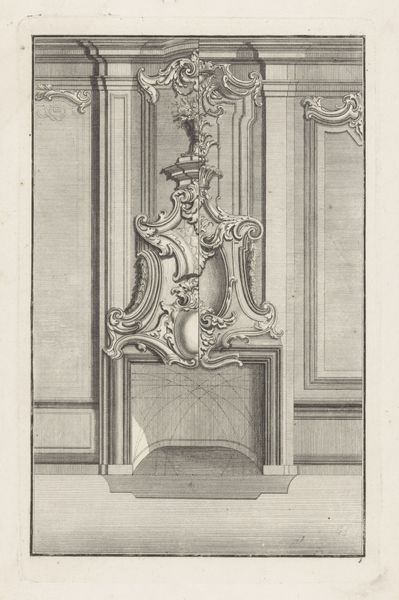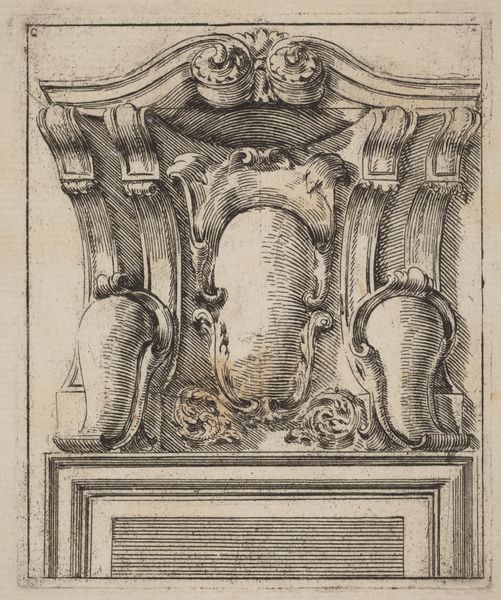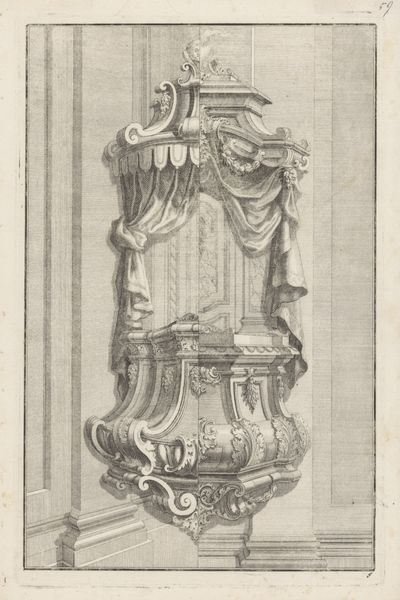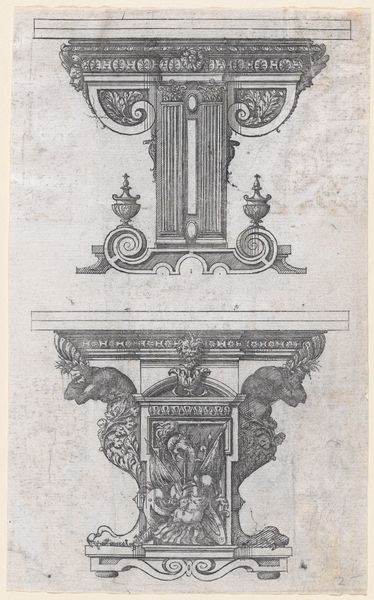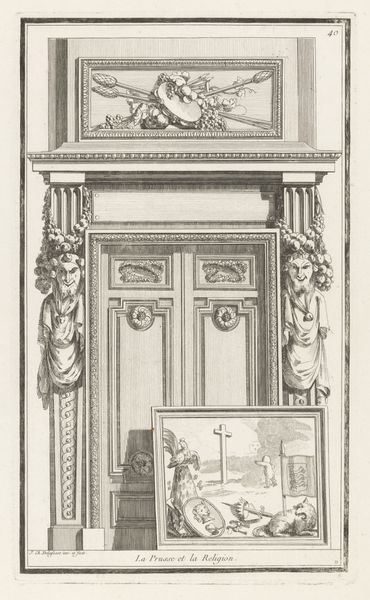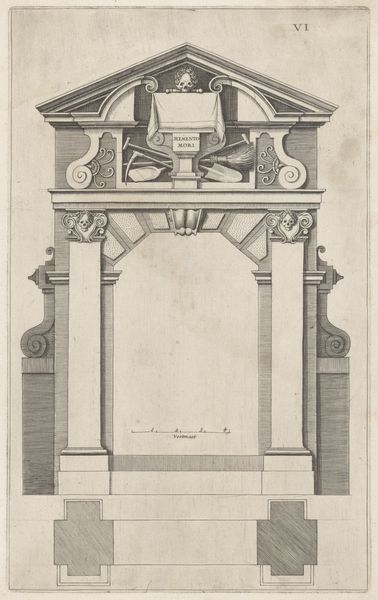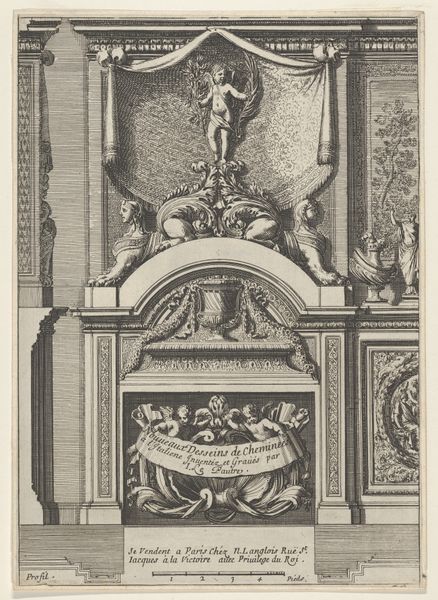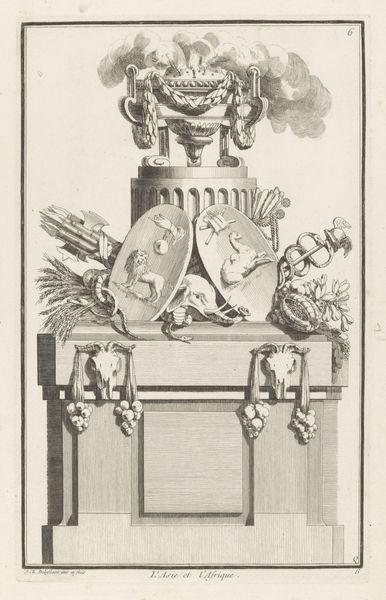
Dimensions: height 381 mm, width 233 mm
Copyright: Rijks Museum: Open Domain
Curator: Standing here, one cannot help but be struck by the ambition inherent in “Trots en Tirannie,” or “Pride and Tyranny,” a print made between 1768 and 1771 after Jean Charles Delafosse, held here in the Rijksmuseum collection. Editor: My first impression is one of overwhelming ornamentation! It feels less like a coherent image and more like a compendium of different decorative elements, almost like a sample book for an artisan. Curator: That’s a keen observation. Consider Delafosse's broader artistic practice. He wasn't just creating 'high art'; he was designing architectural ornaments, furniture details – the stuff of daily life for the aristocracy. These weren’t simply aesthetic choices, but powerful markers of social status communicated through material excess and stylistic choices. Editor: Exactly. Look at the crisp lines of the engraving itself. Think of the labor involved, the deliberate choices in line weight and density. The work itself mimics the meticulous handcrafting that would have been necessary to produce these objects in three dimensions from choice materials. This print essentially advertises elite craftsmanship, catering to a market obsessed with displaying its wealth and taste. Curator: And that taste, so explicitly displayed with motifs of classical references! Notice the wreaths, the swags, the idealized pastoral scenes within circular medallions. The tyranny referenced might allude to contemporary power struggles, where the artist used allegorical ornament to comment on the abuses of aristocratic privilege in France. Editor: It becomes more apparent when you consider how the Baroque style of ornamentation would have shaped public spaces and perceptions of power. A decorative aesthetic helped to perpetuate socio-political power. Curator: In that sense, a piece like “Trots en Tirannie” shows how the mechanics of production were deeply intertwined with the messaging behind visual imagery. Delafosse understood how objects mediate social dynamics. Editor: It leaves me considering the role these seemingly benign designs played in the broader culture. The artwork encapsulates a kind of visual propaganda in its emphasis on luxury goods and elite artistry. Curator: Yes, understanding the material culture around art like this illuminates its role in shaping—and solidifying—contemporary hierarchies. Editor: Ultimately, I am captivated by how the Baroque and Classical styles and imagery reveal power at play, demonstrating a deep sense of societal tensions.
Comments
No comments
Be the first to comment and join the conversation on the ultimate creative platform.
